4 Nights / 5 Days

History Of Laos
The Lao people migrated into Laos from southern China from the 8th century onward. In the 14th century, the first Laotian state was founded, the Lan Xang kingdom, which ruled Laos until it split into three separate kingdoms in 1713. During the 18th century, the three kingdoms came under Siamese (Thai) rule and, in 1893, became a French protectorate. With its territory incorporated into Indochina. A strong nationalist movement developed during World War II, but France reestablished control in 1946 and made the king of Luang Prabang constitutional monarch of all Laos. France granted semiautonomy in 1949 and then, spurred by the Viet Minh rebellion in Vietnam, full independence within the French Union in 1950.
In 1951, Prince Souphanouvong organized the Pathet Lao, a Communist independence movement, in North Vietnam. Viet Minh and Pathet Lao forces invaded central Laos, resulting in civil war. By the Geneva Agreements of 1954 and an armistice of 1955, two northern provinces were given to the Pathet Lao; the rest went to the royal regime. Full sovereignty was given to the kingdom by the Paris Agreements of Dec. 29, 1954. In 1957, Prince Souvanna Phouma, the royal prime minister, and Pathet Lao leader Prince Souphanouvong, the prime minister's half-brother, agreed to reestablishment of a unified government, with Pathet Lao participation and integration of Pathet Lao forces into the royal army. The agreement broke down in 1959, and armed conflict began anew.
In 1960, the struggle became a three-way fight as Gen. Phoumi Nosavan, controlling the bulk of the royal army, set up in the south a pro-Western revolutionary government headed by Prince Boun Oum. General Phoumi took Vientiane in December, driving Souvanna Phouma into exile in Cambodia. The Soviet bloc supported Souvanna Phouma. In 1961, a cease-fire was arranged and the three princes agreed to a coalition government headed by Souvanna Phouma.
Climate
Tropical monsoon; rainy season (May to November);
Dry season (December to April)
Laos Sightseeing
Temple tours
Check out the old French colonial architecture and numerous Buddhist wats and stupas in Vientiane, one of Asia's most relaxed and quiet capital cities, suitably nestled in fertile plains on the banks of the Mekong River.
Luang Prabang
Visit Laos' cultural and religious centre, Luang Prabang. This ancient royal city has been a UNESCO World Heritage site since 1995. Located between the Mekong and Khan River, it boasts 33 large temple complexes and around 1,000 resident monks.
Plain of Jars
Marvel at the mysterious Plain of Jars, near Phonsavan. Hundreds of stone jars, some weighing up to 6 tonnes, are scattered over the landscape. Legend says they were used to ferment rice wine in the sixth century to celebrate a victory in battle.
Wat Xieng Thong
Be awed by Wat Xieng Thong, one of Laos' most impressive temples. Decorated with coloured glass and gold, it is testament to the fact that Luang Prabang had been the royal capital until 1975. The royal palace itself contains fine artwork and gifts made for former kings.
Traditional weaving
Drop in on a traditional community in Ban Phanom, near Luang Prabang. The village is famous for its weavings and offers the opportunity to purchase bargain-priced silk and embroideries.
Pak Ou Caves
Do not miss the fascinating Pak Ou Caves. The two caves, Tham Ting and Tham Phun, are full of Buddha images that have been left there over hundreds of years by worshippers. They are easily reached by speedboat from Luang Prabang.
Wat Phu
Admire the breathtaking views across the Mekong Valley from the Wat Phu temple, constructed on a mountain top near fresh spring water by the Khmer Hindus, who went on to settle their empire at its former capital - Angkor Wat (Cambodia).
Dolphin watching
Head south to the supremely laid-back Si Phan Don (Four Thousand Islands), an archipelago on the Mekong River, to see the spectacular Khone Phapheng (the largest waterfall in South-East Asia (by volume)) and the endangered irrawaddy dolphins.
Monks
In the early morning pay a visit to the Morning Market in Vientiane where you will see lines of saffron-clad monks silently collecting alms from the local traders.
On your first day you will drive the short distance to the Roluos group of temples, the oldest of all Angkorian temples. Here you will visit the temples of Lolei, Preah Ko, and the pyramid of Bakong. From Roluos you will take a boat trip to the floating village of Kompong Phluk and witness this incredible floating community. You will experience the vastness of the Tonle Sap lake, the largest in South East Asia, and back in Siem Reap you will visit the holy mountain of Phnom Krom. After climbing this you will be treated to a glorious sunset over the surrounding paddy fields and lake. You will then return to Siem Reap where the evening is free at your leisure
Overnight at Combodia
This morning you will explore the Small Circuit. This tour includes the huge pyramid of Takeo, and the jungle-clad Ta Prohm, made famous by the Hollywood blockbuster ‘Tomb Raider’. You continue to visit Sras Srang, known as the King's bathing pond, and Banteay Kdei, before exploring Prasat Kravan, an elegant brick temple. After lunch you explore the impressive Royal City of Angkor Thom, where you will find the Bayon, a temple famed for its many gigantic carved faces smiling beguilingly down at you. You will also visit other important sites in this immense walled city, including the pyramid of Baphuon, Phimeanakas, and the royal viewing stands known as the Terrace of the Elephants and the Terrace of the Leper King. If you have the time your guide will take you to an excellent spot for watching a mesmerising Angkor Wat sunset. The evening is free at your leisure.
Overnight at Combodia
This morning you head 30km north to visit the captivating and beautiful temple ofBanteay Srei or ‘Fortress of the Women’. The journey allows you to experience the beautiful Cambodian countryside as you pass through small typical villages, on-route you will visiting Banteay Samre. Banteay Srei is an elaborately decorated temple, embellished with floral motifs and scenes from the Ramayana, all carved from pink sandstone. It is said the carvings must have been done by women as the detail is too fine for the hands of a man. You then head further north into the jungle and foothills heading to Kbal Spean, or the ‘River of a Thousand Lingas’. This site was only ‘rediscovered’ in 1969 and is a tranquil, cool place with an attractive waterfall as a back drop. Here you will experience the magical sight of the river bed covered with glistening ancient sculptures of lingas. After relaxing and perhaps having a refreshing paddle it is a 50km drive back to Siem Reap.
(Here you can enjoy dinner and a fascinating Apsara dance show at a local restaurant.)-Optional
Overnight at Combodia
An early start today as you travel the 75+km to Beng Mealea, a sprawling mass of a temple hidden in the jungle, and which has only recently become accessible. Once again the journey to your destination is rewarding in its own right as you drive through the Cambodian countryside. After fully exploring the ruins you will head back to the main Angkor complex and discover the spectacular temples of the Grand Circuit, beginning with Preah Khan or ‘Sacred Sword’, one of the largest temples at Angkor. You continue to Neak Pean surrounded by fountains and ponds. Next is Ta Som and its famous strangler fig tree. Finally, you arrive at Pre Rup, a pleasant spot to experience another Angkor sunset if you wish. The evening is free at your leisure.
Overnight at Combodia
You may choose to rise early today to catch the sun rising from behind Angkor Wat’s five carved towers - after being awed you return to your hotel for breakfast. After breakfast it is time to further discover the magnificent Angkor Wat, the world’s largest religious building. You will return to town for lunch, after which you take a short 15km drive to the village of Puok to visit the Artisans d’Angkor Silk Farm. Artisan’s d’Angkor creates the oppourtunity for young Cambodians to find gainful employment in their home villages by teaching traditional Khmer handicraft techniques, such as stone & wood carving, lacquering & gilding, and silk weaving. There is an on-site boutique which allows a great opportunity for finding those last minute quality souvenirs. On the return journey to Siem Reap you will stop-off at the West Baray, a vast Angkor Empire man-made reservoir that still contains water today.
You will be picked up in time and dropped at the airport for your flight back home
We Deal in all Tour and Travel Services. We are One of the Best Tour Operators Read More...

 5D/4N
5D/4N
 5D/4N
5D/4N
 6D/5N
6D/5N
 7D/6N
7D/6N
Usa Golden West 06 Nights/07Days Tour
Las Vegas - Los Angeles - San Francisco
 7D/6N
7D/6N
 8D/7N
8D/7N
7Nights /8 Days – Fabulous West Canada..
Calgary - Vancouver - Victoria Island
 15D/14N
15D/14N
Chennai - Melbourne - Cairns - Brisbane - Sydney - Queenstown - Auckland - Christch..
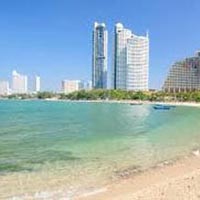 6D/5N
6D/5N
 8D/7N
8D/7N
 5D/4N
5D/4N
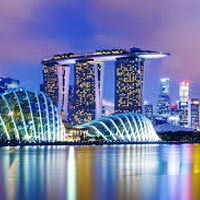 5D/4N
5D/4N
 5D/4N
5D/4N
 5D/4N
5D/4N
 5D/4N
5D/4N
 5D/4N
5D/4N
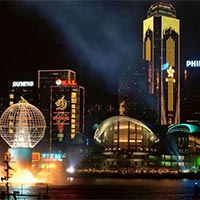 5D/4N
5D/4N
 5D/4N
5D/4N
 5D/4N
5D/4N
 13D/12N
13D/12N
Beautiful Vietnam - Cambodia - Laos 13 D..
Siem Reap - Phnom Penh - Ho Chi Minh City - Vientiane - Hanoi
 7D/6N
7D/6N
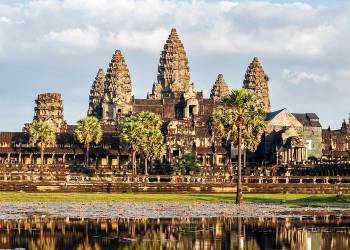 11D/10N
11D/10N
Vietnam - Cambodia 10 Nights 11 Days Tour
Siem Reap - Phnom Penh - Ha Noi - Ho Chi Minh City - Da Nang - Hoi An
 10D/9N
10D/9N
9 Nights Impressive Vietnam - Cambodia T..
Siem Reap - Phnom Penh - Ho Chi Minh City - Hanoi
 5D/4N
5D/4N
 10D/9N
10D/9N
10 Days Impressive Vietnam - Cambodia Tour
Siem Reap - Phnom Penh - Ho Chi Minh City - Ha Long - Hanoi
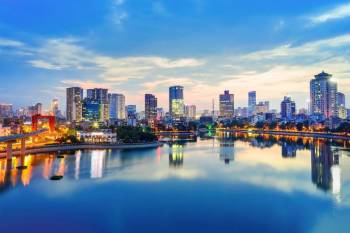 7D/6N
7D/6N
 6D/5N
6D/5N
 12D/11N
12D/11N
11 Night 12 Day Vietnam - Laos - Cambodi..
Siem Reap - Phnom Penh - Ho Chi Minh City - Vientiane - Luang Prabang - Hanoi